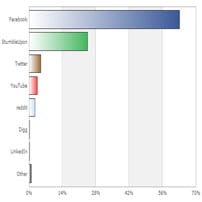Social Media Video – Socialnomics 2015 – Future Insights in 2 Minutes
In this new Social Media Video, “Socialnomics 2015”, (and the “Socialnomics 2017”, latest update) Erik Qualman shows us the way forward. Eric Qualman wrote the book on the how’s and why’s of Social Media. And the influence Social Media has had on our personal and business lives. This new Social Media video is spot on….




